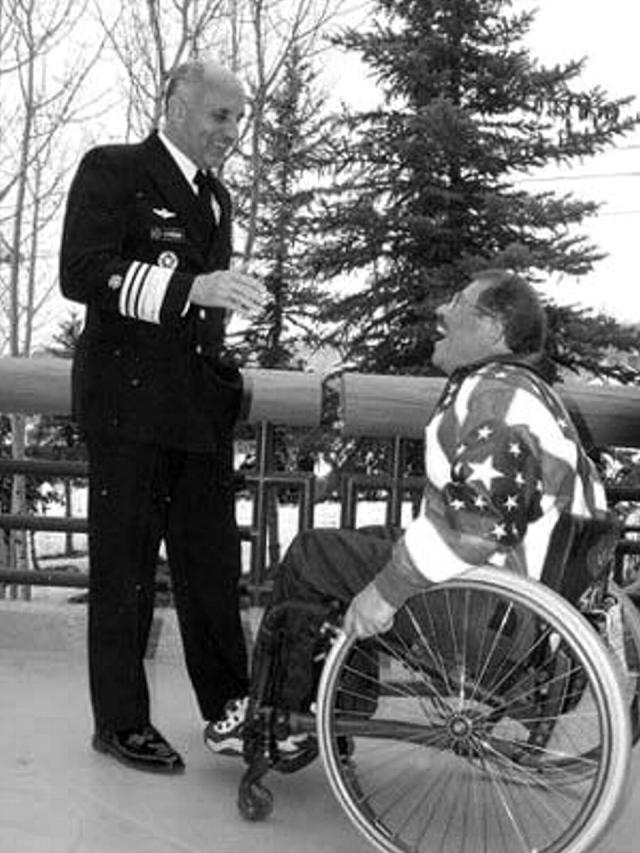Figure 1.

I want to thank the editors of the Journal for the opportunity to contribute a regular column to this publication that has done so much to improve the health and well-being of the American people, as well as the health of the global community. I am particularly pleased to start this series in an issue focused on improving the understanding of disability.
The perception of disability is in transition. With the recognition that disability is not an illness, we increasingly emphasize continuity of care and the relationship between a person with a disability and the environment at the physical, emotional, and environmental levels. Today, 54 million Americans—more than 20% of us—are living with at least one disability. Some individuals are born with a disability; others acquire disabilities over the course of a lifetime. At any time, each of us is at risk for acquiring a disability, whether through illness, injury, genetics, or any number of other causes.
As we age, our likelihood of having a disability of some kind increases. With the baby boom generation approaching later life, there will be more and more persons with or at risk for a disability. Disability is an issue for the nation as a whole, not just for those of us concerned about public health.
In July, I issued “The Surgeon General’s Call to Action to Improve the Health and Wellness of Persons with Disabilities” (http://www.surgeongeneral.gov/library/disabilities). This call to action is a call to caring. It is a reminder that every life has value and every person has promise. We must redouble our efforts so that people with disabilities achieve full access to disease prevention and health promotion services.
The 4 goals of the call to action are to ensure that
People nationwide understand that persons with disabilities can lead long, healthy, productive lives.
Health care providers have the knowledge and tools to screen, diagnose, and treat the whole person with a disability with dignity.
Persons with disabilities can promote their own good health by developing and maintaining healthy lifestyles.
Accessible health care and support services promote independence for persons with disabilities.
Achieving these goals will not be easy. Research on disability must continue. Health care professionals must be better educated and trained. And health care and services for persons with disabilities must be made more accessible.
This call to action encourages health care professionals to see and treat the whole person, not just the disability. It also encourages educators to teach about disability; the public to see an individual’s abilities, not just his or her disability; and communities to ensure accessible health care and wellness services for persons with disabilities.
This call to action provides a road map for change. It identifies the challenges to be faced and strategies to address this critical public health concern. Because it is based on input from health specialists in the disability field and from individuals with disabilities and their family members, this call to action presents a scientific perspective on disability, as well as the reality experienced by those living daily with disabilities.
In addition to “The Surgeon General’s Call to Action to Improve the Health and Wellness of Persons with Disabilities,” the Department of Health and Human Services has developed a special publication that presents all the information from the full call to action in a format designed to increase health literacy about disabilities. Health literacy is the ability of an individual to access, understand, and use health-related information and services to make appropriate health decisions. The “People’s Piece” on disability (available at http://www.surgeongeneral.gov/library/disabilities) answers the most commonly asked questions about disability and about what we can all do to help people with disabilities to be healthy and independent.
If we can spread the messages about the importance of incorporating all Americans into every aspect of life, we will achieve the 4 goals of this call to action.
We can and must become a nation that recognizes the need to break down barriers to health and wellness for people with disabilities. With concerted action, undertaken through public–private partnerships spanning all levels of government and all service, public health, education, and research systems, the full potential of persons with disabilities can be realized.
We must become a nation that makes health and wellness for people with disabilities a priority. Thank you for all you are doing. I look forward to continuing to work with you.


